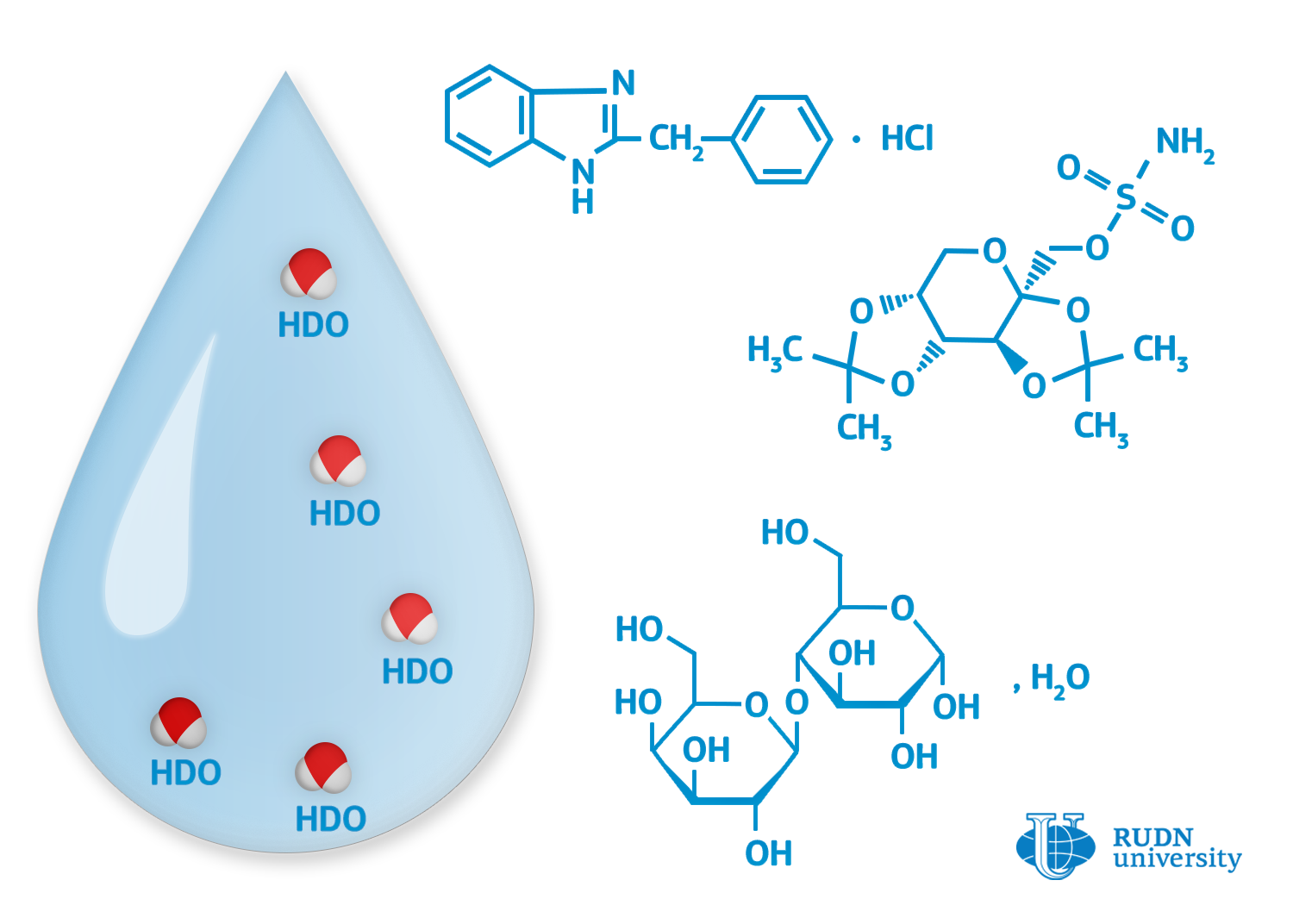Water under low deuterium concentrations proved to be useful for medicine
Deuterium, heavy hydrogen isotope, having a nuclear containing an odd neutron, is present in any kind of natural origin water. In typical drinking water rate of deuterium does not exceed 0,015%. If the concentration of deuterium changes to higher or lower level, biological characteristics of water will change. For example, results of previous research show that water with deuterium insufficiency may produce antitumor, antidotal, and metabolical action, influence vital signs of cell cultures in water environment.
The group of RUDN scientists under the guidance of Anton Syroeshkin and Igor Zlatskiy, a Department of Pharmaceutical and Toxicological Chemistry of RUDN Medical Institute explored how the change in deuterium concentration in water influences the processes in biological molecules and vital cells.
Scientists compared water with different isotope rations: light water with reduced deuterium content (D/H around 5 ppm), water with normal deuterium content(140 ppm), and heavy water D2O.
For molecular level of life arrangement, the scientists of RUDN explored galactose mutarotation - rotary transformation of molecule, supramolecular – enzymatic destabilaso-lysozyme activity, for pharmaceutical substances - solubility and diphase distribution, and life time of vital cells in water with different isotope composition.
It was found that rate constant of speed variation of optical rotate for L-galactose was two times smaller than for D- galactose with small content of deuterium despite the concentration. While in heavy water first order mutarotation for L-galactose was not noticed.
The initial velocity of enzymatic lysozyme activity of destabilaso-lysozyme changed: in water under low content deuterium it raised twice, while in heavy water there was no change in activity.
When exploring suspension systems the dissolution rate of active drug substances was investigated. Dissolution occurs faster when protium concentration is greater than deuterium. It is in line with the normal kinetic isotope effect and proves the importance of right choice of solvent isotope composition to speed the process.
The change in water isotope composition influenced the life cells behavior: ambigua single-cells organisms were immobilized up to 8 times faster in water solutions under low deuterium concentrations.
These findings may prove useful for the following biomedical and therapeutic research, where deuterium can act as a regulator of biological characteristics of normal or tumor cells.
The article in Chemical Engineering Journal
Products derived from microalgae represent a cutting-edge development in the field of bioeconomy. The potential of this biological resource was discussed at the international research seminar “Foundations for a Green Sustainable Energy”, part of the BRICS Network University’s thematic group on “Energy”. The event was organized by the Institute of Ecology at RUDN University.
Ambassadors of Russian education and science met at a conference in RUDN University to discuss how they can increase the visibility of Russian universities and research organizations in the world, and attract more international students in Russia.
The international scientific seminar hosted by RUDN Institute of Ecology “Experience of participation in student organizations as a way to form career skills” united scholarship recipients of the International Student Mobility Awards 2024 and Open Doors, along with members of the scientific student society “GreenLab” and the professional student association “Kostyor (Bonfire)” shared their projects focused on environmental protection.
